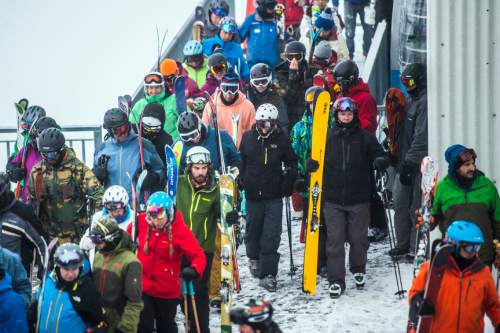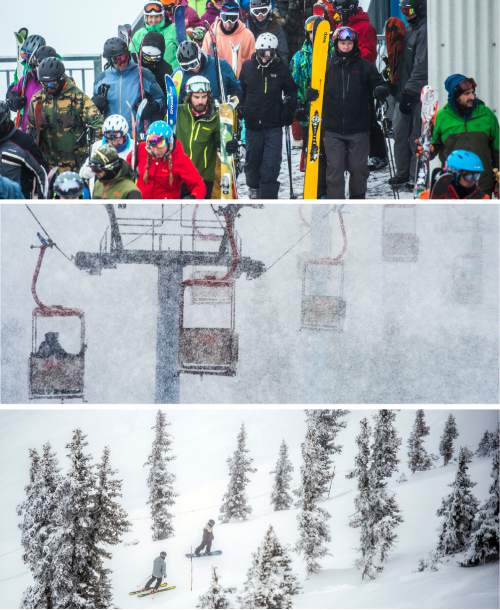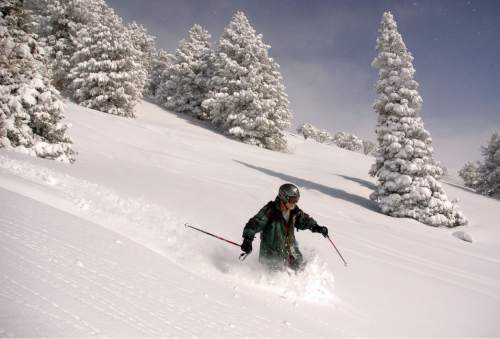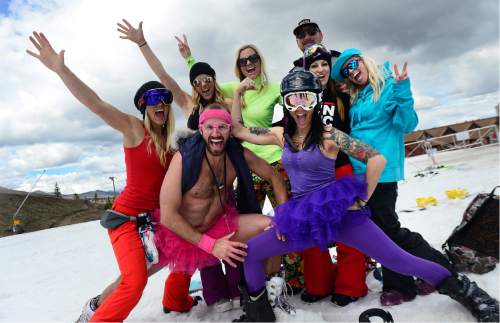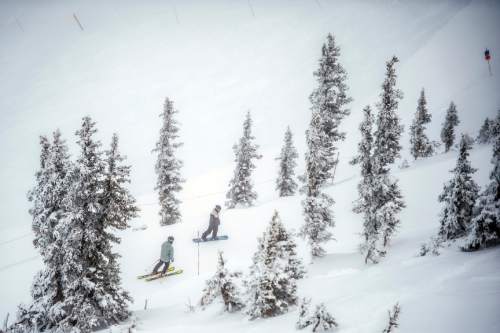This is an archived article that was published on sltrib.com in 2016, and information in the article may be outdated. It is provided only for personal research purposes and may not be reprinted.
Early snow helped, but there's little doubt the "Vail effect" played a significant role in boosting Utah's ski industry to record visitation during the 2015-16 season — by a sizable margin.
In the first year Vail Resort presented the world a unified Park City Mountain Resort-Canyons Resort ski area, Utah's 14 active resorts attracted 4,457,575 visitors, almost 5 percent more than the previous best winter (4,249,190 in 2007-08).
That total also was 12.9 percent better than the preceding, weak-snow winter, Ski Utah President and CEO Nathan Rafferty said Thursday, but more impressively was 10.4 percent above the five-year average of 4,037,349.
"Our industry is very, very healthy," he said at the marketing organization's annual season-ending news conference. While not naming names (Utah's privately owned resorts zealously protect their individual lift-ticket numbers), he said six resorts had record years, too.
To Rafferty, one of the most encouraging aspects of this record is that it was set in a winter of mediocre snowfall.
Alta Ski Area, which always logs the highest snowfall total, measured 438.5 inches. In 2007-08, it received 701.5 inches, while neighboring Snowbird stayed open through the Fourth of July.
But some of that snow came early, magnifying the buzz surrounding Vail's creation of Park City Resort, the largest resort in the United States after the connection of Park City and Canyons was completed in December.
And with Vail's acquisition of Midwestern ski resorts outside of Chicago and Milwaukee expanding its base of Epic Pass holders, more skiers from around the globe had reason to consider a visit to Utah.
"People said, 'I gotta check that out,' " Rafferty said, noting that other Wasatch Front resorts also benefited from the spillover of outsiders coming to Park City. "One of the best things we have in this state is variety."
Variety is also a trademark of this season's other big change — the move of Deer Valley into Big Cottonwood Canyon with its preseason acquisition of Solitude Mountain Resort.
Vail officials expressed pleasure with their first season running the unified resort.
"This was a historic season," said spokeswoman Margo Van Ness. "Unveiling the new Quicksilver Gondola that physically connected the resort in its entirety and brought the new mountain to life was a special moment."
"All the capital projects that debuted this season helped to transform the guest experience and provide a new one-resort reality," she added.
Sundance Resort was one of those resorts to sell a record number of lift tickets, said spokeswoman Annie Davis, noting that at times the Provo Canyon ski area was "bursting at the seams."
Instead of having to turn away 20 or so vehicles per year from its small parking lots, she noted, more than 1,000 vehicles had nowhere to park this winter.
Up north at Powder Mountain, resort spokesman J.P. Goulet said visitation was up 29 percent this winter, which he termed "massive."
He felt the Ogden Valley resort received spin-off visitation from people initially lured to Park City or Salt Lake City — "If we can capture those people for just one day," he mused. But Goulet also is convinced "the word is getting out about Ogden. People realize there aren't big crowds here and that it's cheaper to ride and rent a place."
Downtown Ogden also benefited from increased visitation to that area's three resorts — Snowbasin, Nordic Valley and Powder Mountain, said Visit Ogden spokeswoman Sydnie Furton.
"We definitely saw more pedestrian traffic on 25th Street, and our restaurants were up," she said.
Record skier years
2015-16 • 4,457,575
2007-08 • 4,249,190
2010-11 • 4,247,510
2013-14 • 4,148,573
2006-07 • 4,082,094
2009-10 • 4,070,822
2005-06 • 4,062,188
2012-13 • 4,018,812
2008-09 • 3,972,984
2014-15 • 3,946,762
Source: Ski Utah


